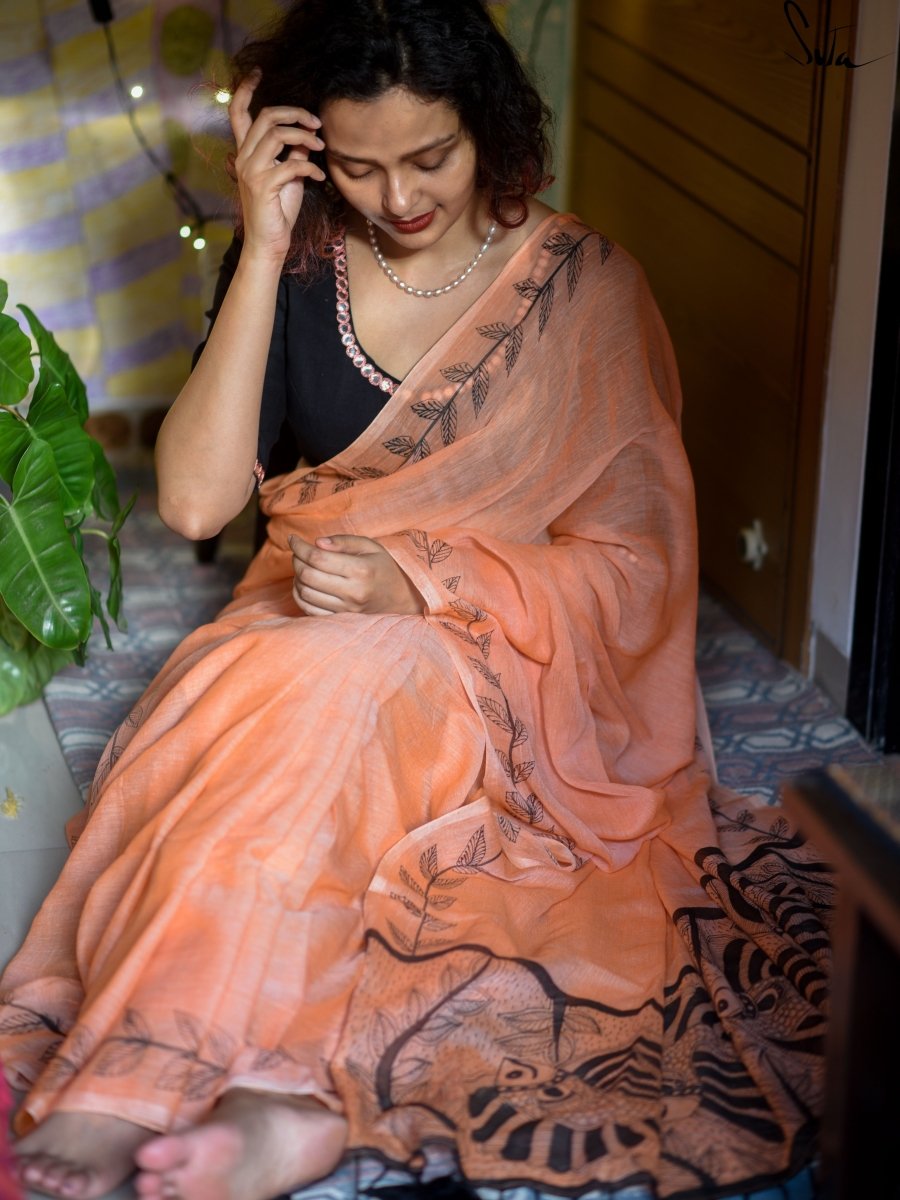
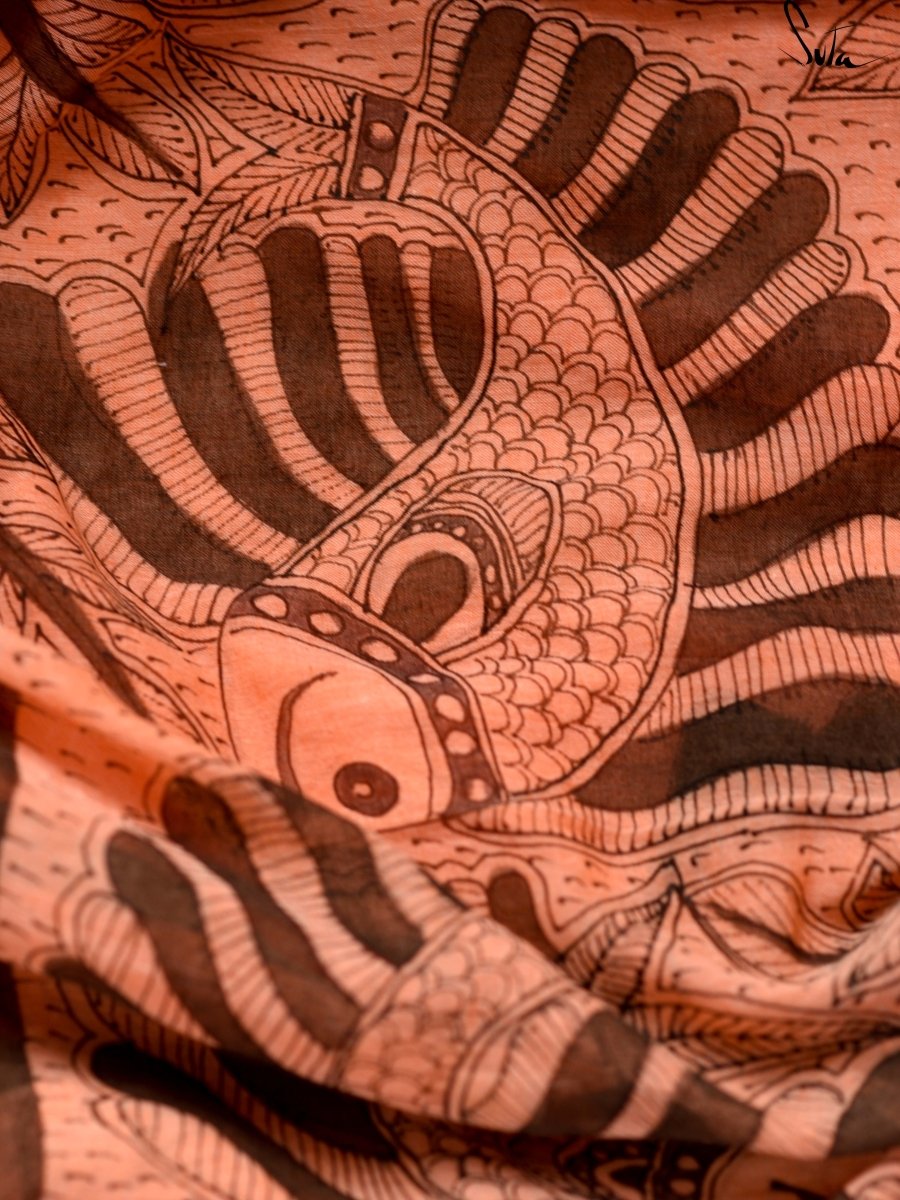
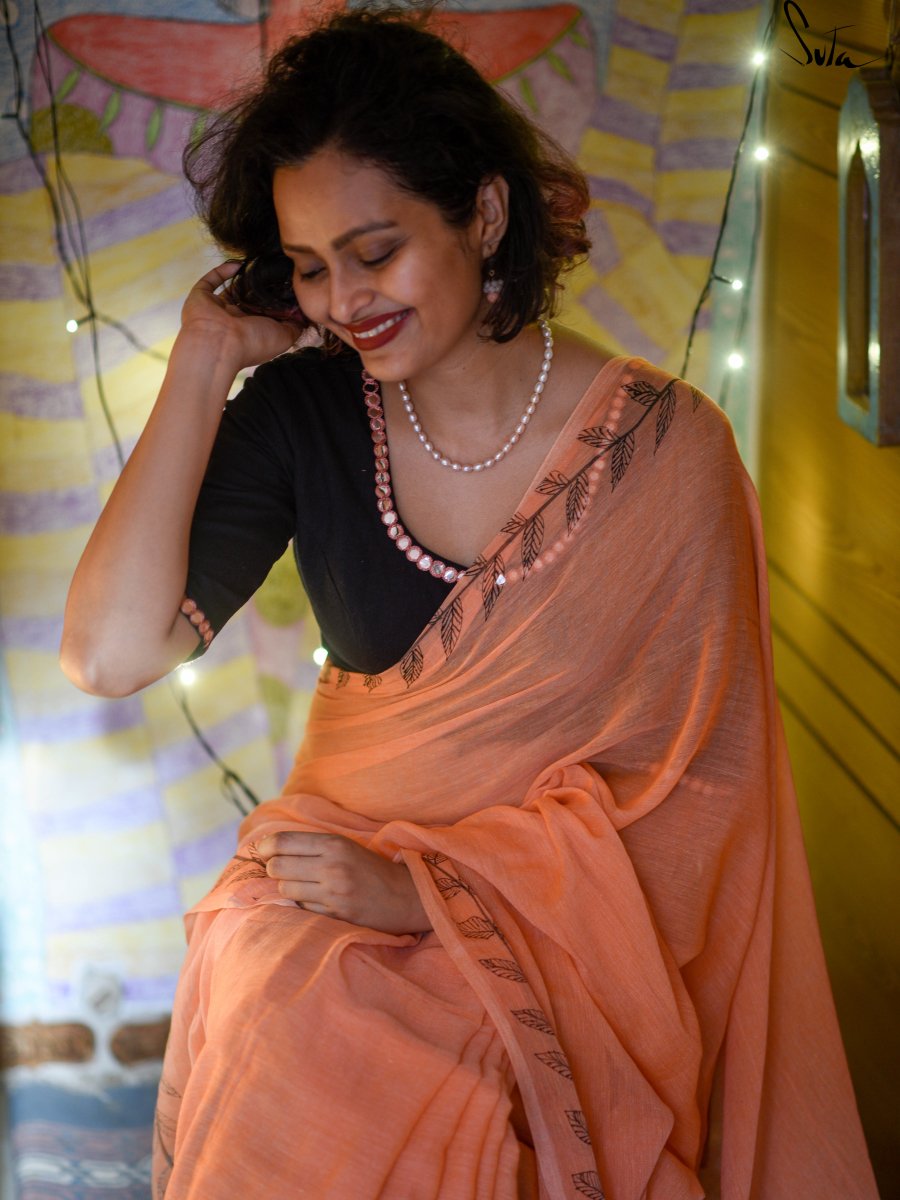
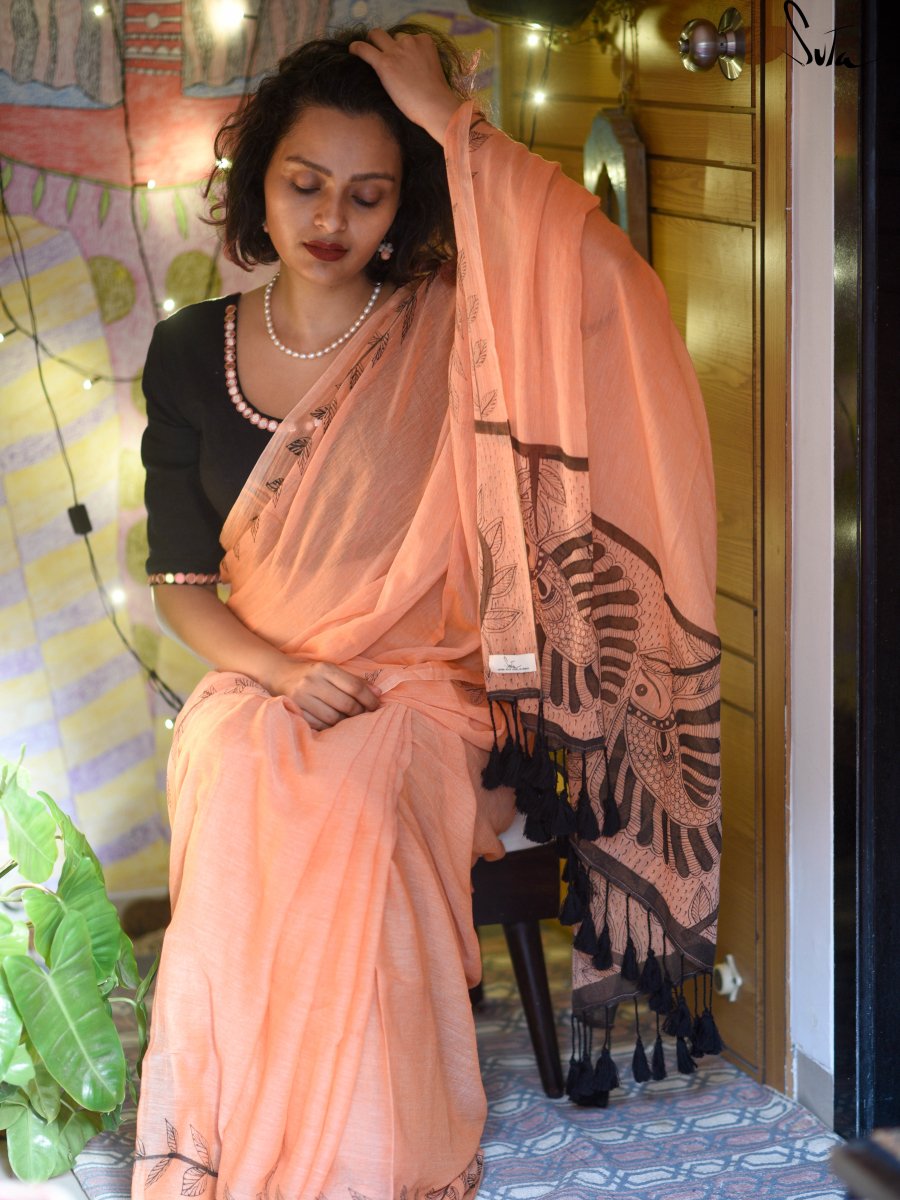
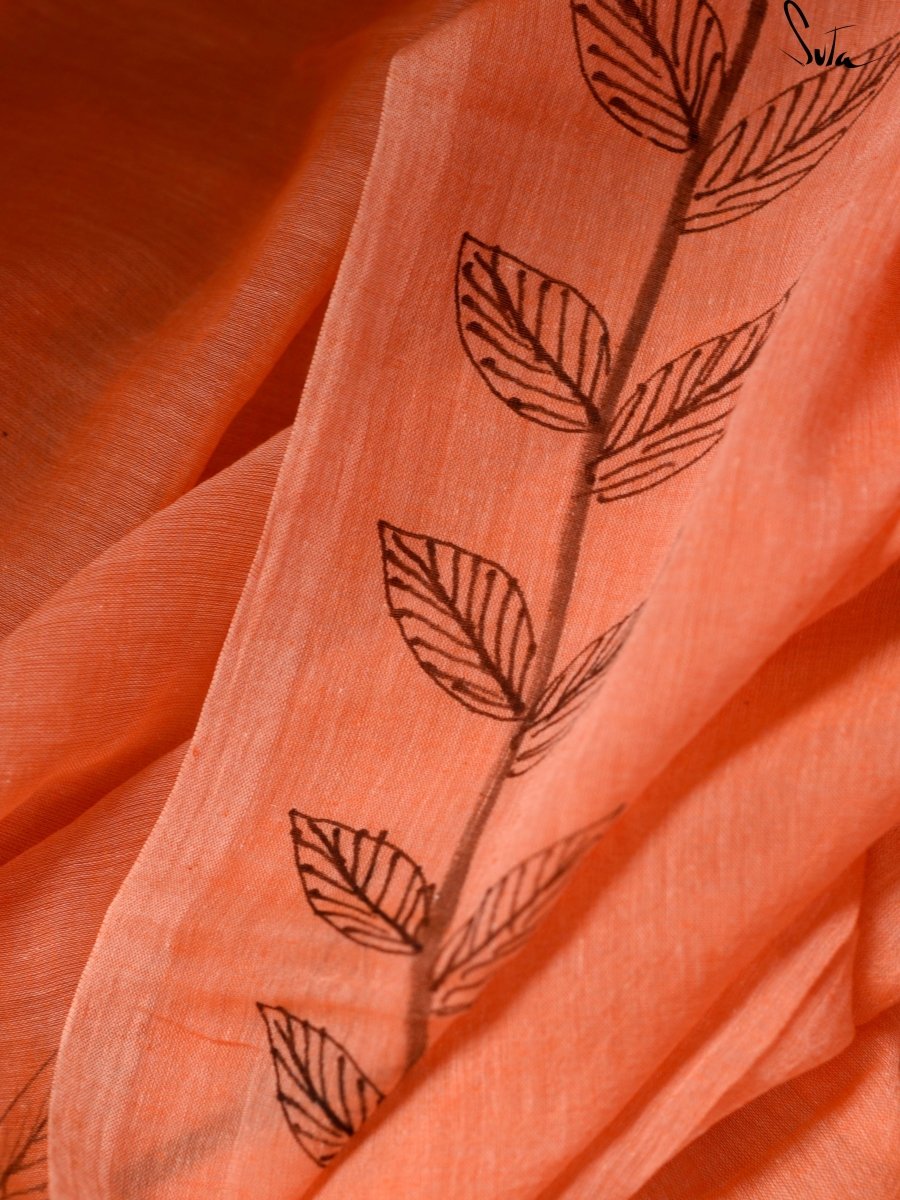
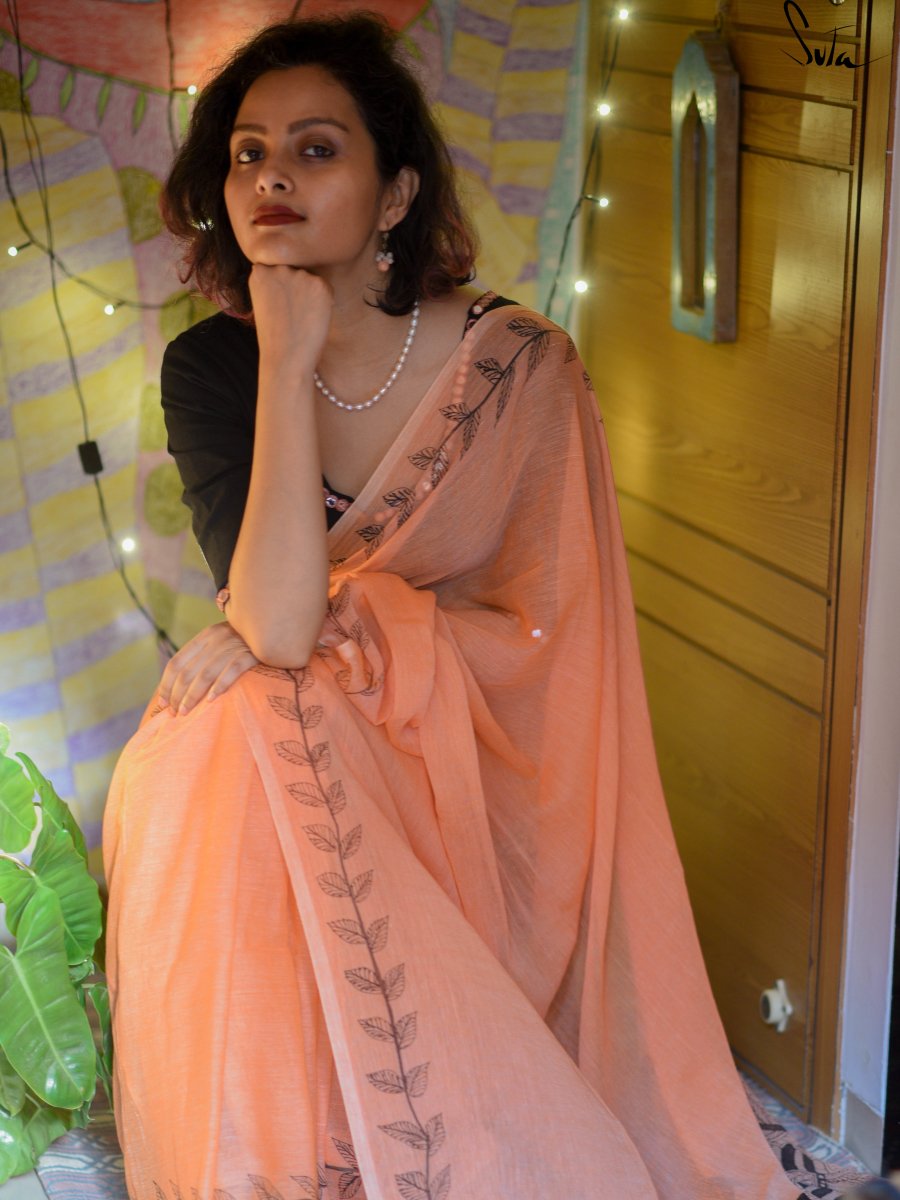
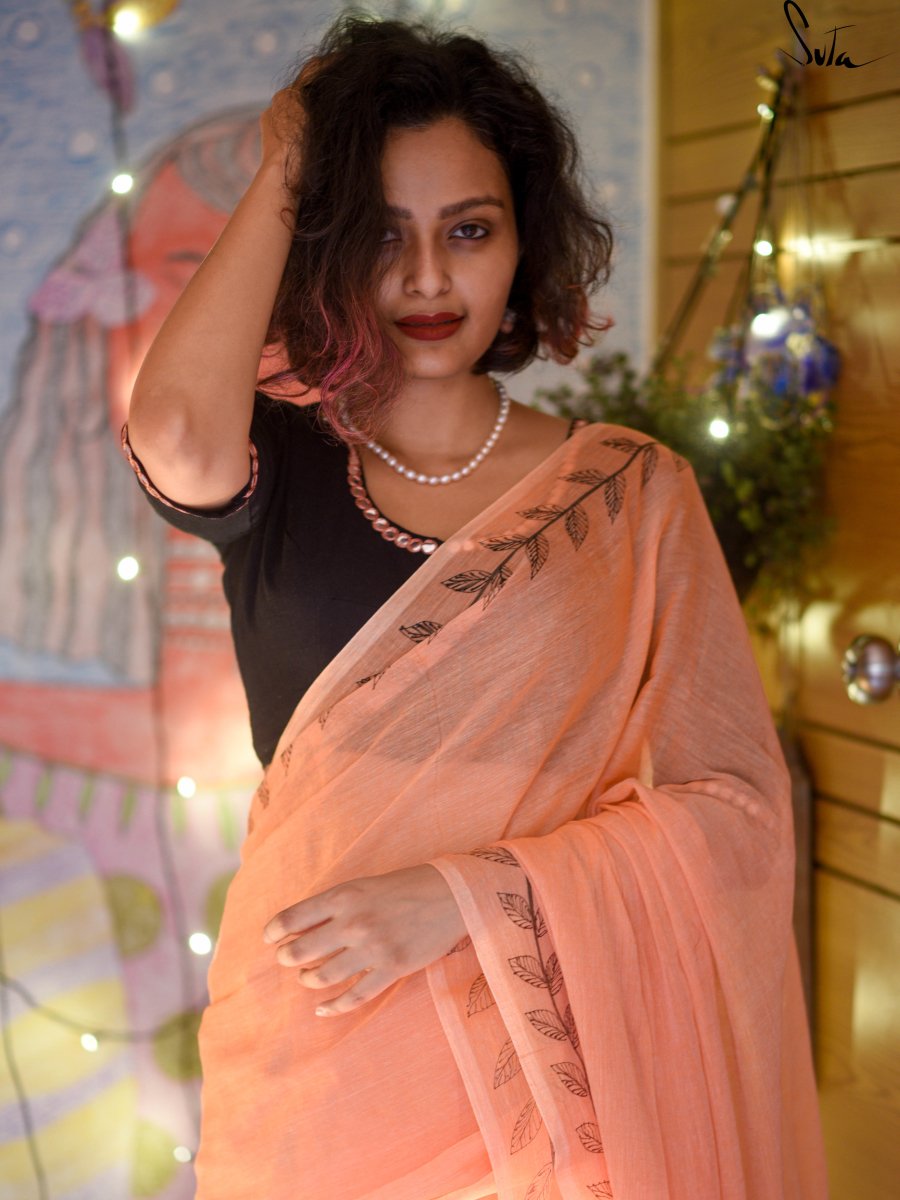
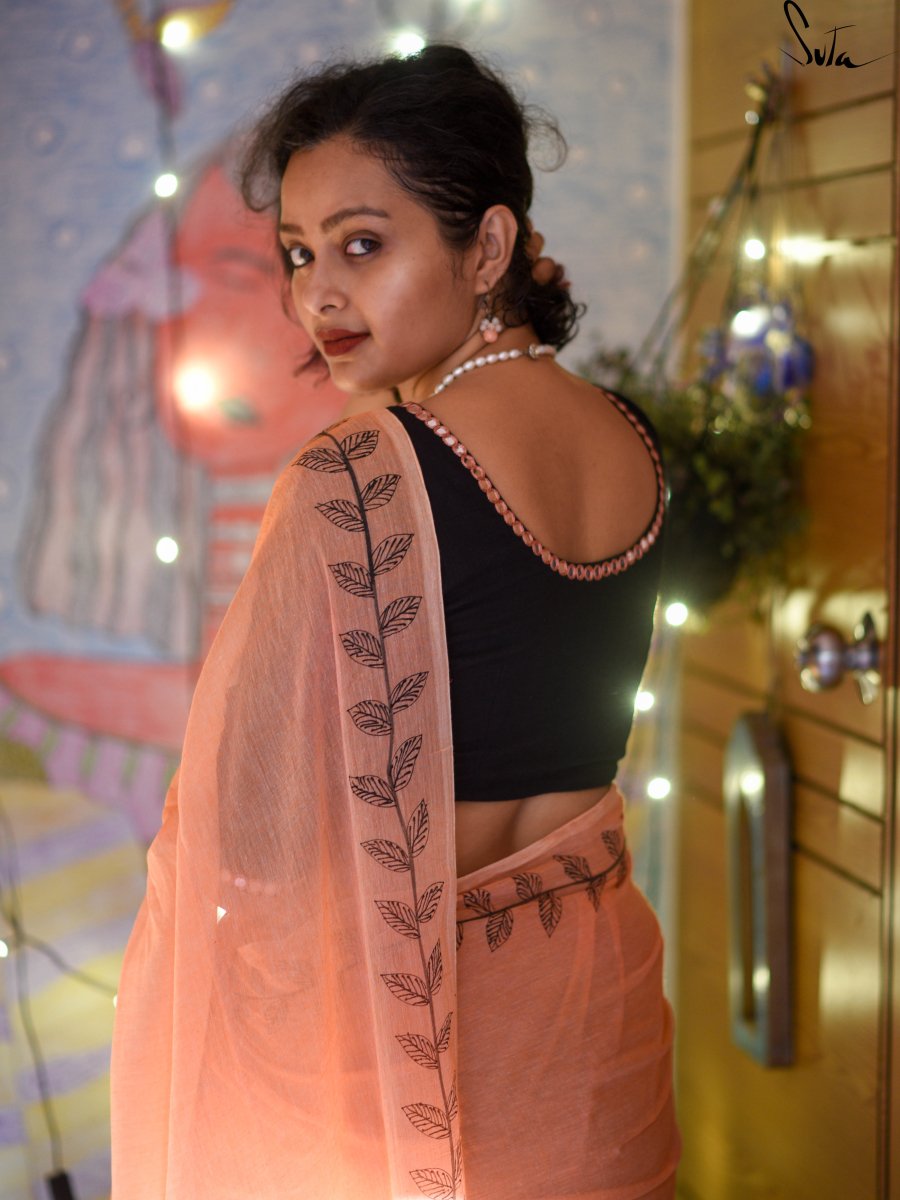
Orange Soft Mulmul Cotton Printed Fancy Saree With Tassels
Details
Length: 5.50 m (550.00 cm) ; Width: 1.19 m (119.38 cm)
Blouse Piece: No
Wash Care: Dry Wash
Blouse: Su, the model is wearing size S of blouse called Black Glass House
Fabric: Mul Cotton
Disclaimer: The pictures are clicked in daylight. Color may vary slightly from the image due to the screen brightness.
Story
It was a glorious day, that day. Her first ever vacation had just begun and she could hardly contain her grin! Was it just her or did the sun really wink at her when she said good morning to him? Was it just her or did the fancy kettle in the hotel room sing a foreign tune when she switched it on? Was it just her or did the seaweeds sway to the song in her head like someone below the sea was singing along too? She hoped it was just her¦.and it all happened just for her!
This beautiful hand-painted made-in-heaven mul in orange is a dream!
Description
Our artists paint with all their hearts to create the hand-painted sarees. First, the painting is created with a pencil and water colours and once it is finalised, it is made on a live-sized paper and sent to artisans in villages. These artisans keep this as a reference and paint the final painting on the fabric in a free-hand technique. The softest Mul fabric becomes the perfect canvas for this art and these sarees make a statement like no other. There are bound to be some irregularities here and there and no two products will look absolutely the same. This is the beautiful allure of hand-painted art.
The mul cotton is what we call ˜Made in Heaven at Suta. Known in West Bengal as mul mul, the fabric is what can be categorised as muslin cotton. It is believed that this fine method of weaving cotton can be traced back to even before the Indus valley civilisation. What makes this fabric special is the almost magical process of weaving it. Cotton fibres are separated and spun into strong threads. The lightest and the most delicate fibres are separated and are then spun into muslin thread. These are then woven into fabrics by skilled weavers. The history of muslin weaving is a beautiful chapter in the history of Indian textiles. The process of the yore was much more complex and involved many unique tools that look primitive but worked like magic. The upper jaw of a catfish was used to initially clean the cotton before spinning. To separate the lightest fibres, a Dhunkar (a bamboo bow) was used, which when strung in a distinctive way made the lighter fibres rise above the heavier ones. This process gave the title ˜woven air to the muslin fabric. Weavers famously wove on looms that were at ground level and operated the looms from pits dug in the ground. Even during the Mughal era, the muslin fabric was seen as a symbol of power for its finesse. History is full of anecdotes to prove the awe that the muslin fabric generated. Emperor Aurangzeb is said to have chided his daughter Zeb-un-Nisa for appearing naked in the court when in reality she had been wearing several layers of the muslin cloth! Such was the fabrics delicateness. The almost invisible fabric had made an Arab traveller in the 10th century remark that the degree of fineness is such that a garment can be drawn through a ring of a middling size. During the British colonisation and even during the Mughal rule, the art of weaving muslin took a hit as weavers were treated poorly and drought hit many of the weaving centres. As a result, today, the process of weaving has seen a lot of change. Nevertheless, the essence of it hasnt changed and the charm of the fabric still remains.
Kindly empty your cart to purchase a Relove product OR checkout with the existing products of your cart and then, shop Relove products.
Choose options








Orange Soft Mulmul Cotton Printed Fancy Saree With Tassels





